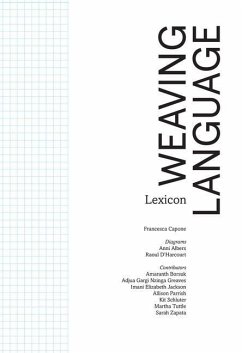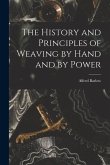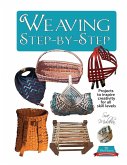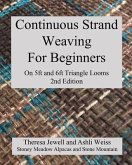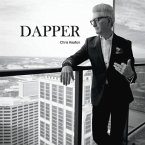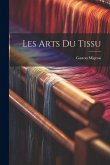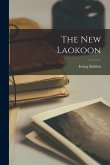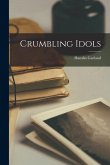Awarded the Frances Mason Harris '26 Prize from Brown University in 2015. The Weaving Language series examines the poetics of weaving traditions through historical research as well as contemporary practices. Attempting to dismantle and rebuild commonplace understandings of the history of writing, Weaving Language focuses on fiber-based forms as a longstanding but often overlooked medium for record keeping, storytelling, and poetry. WEAVING LANGUAGE I: LEXICON is the first book in a three book series, and the last to be published in a trade edition. In the newly edited and expanded edition of WLI: Lexicon, weaving processes are mapped onto English grammar to suggest a method for reading woven works. Offering visual vocabularies as both discreet concrete poems as well as a collection of translatable terms, this book invites readers, writers, and weavers to participate by considering weaving as a system that can be decoded. Textile forms are broken into the basic building blocks of language, presented as a visual/textual lexicon. The book includes diagrams by Anni Albers with permissions from the Josef and Anni Albers Foundation, as well as an afterward by Kit Schluter. Thanks to a grant from the Oregon Arts Commission and the Ford Family Foundation, WLI: Lexicon is presently being funded for an expanded and multivocal edition, and will represent the work of a small collective of artists including Martha Tuttle, Allison Parrish, Sarah Zapata, Adjua Gargi Nzinga Greaves, Amaranth Borsuk and Imani Elizabeth Jackson. Originally published as an artists' book in an edition of 5 in 2015, books from the Weaving Language series are in the collections at the MoMA Library in New York, The Watson Library at the Metropolitan Museum of Art, The Harris Collection at the John Hay Library, Brown University, Providence, RI, and the Joan Flasch Artist Book Collection at the SAIC in Chicago, IL. Weaving Language I: Lexicon is a strange and intriguing way to cross the mute and the written into a dialogue of akin and unmaking a weaving, a grammar and vocabulary with it's own rules of order by association. Not synesthesia but a stimulation of relations heretofore overlooked or even non-existent. A silent background of color and pattern aligned with a torrent of words brought into the same locale to make a beautiful, uncanny object.--Prize Committee, Literary Arts at Brown University Weaving Language probes the relation of lines of thread with lines of text and posits a metaphorical synthesis of the two. A beautiful and intriguing book.--Rosemarie Waldrop Francesca Capone has assembled a beautifully-made tool kit for many of us to pause and go further when we hear, weaving is like writing.Weaving Language I: Lexicon actually dismisses the simile and goes straight into the thick of how it is that work with thread and color is a language, a grammar, and a way of expressing, being, and knowing. The argument is not that we should recover this way, but that it has always been here for us, in us, around us. This is a book meant to be studied--such a necessary text to push out the boundaries of poetics and textile studies, both!--Jill Magi Literary Nonfiction. Essay. Hybrid. Art. Poetics.
Hinweis: Dieser Artikel kann nur an eine deutsche Lieferadresse ausgeliefert werden.
Hinweis: Dieser Artikel kann nur an eine deutsche Lieferadresse ausgeliefert werden.

